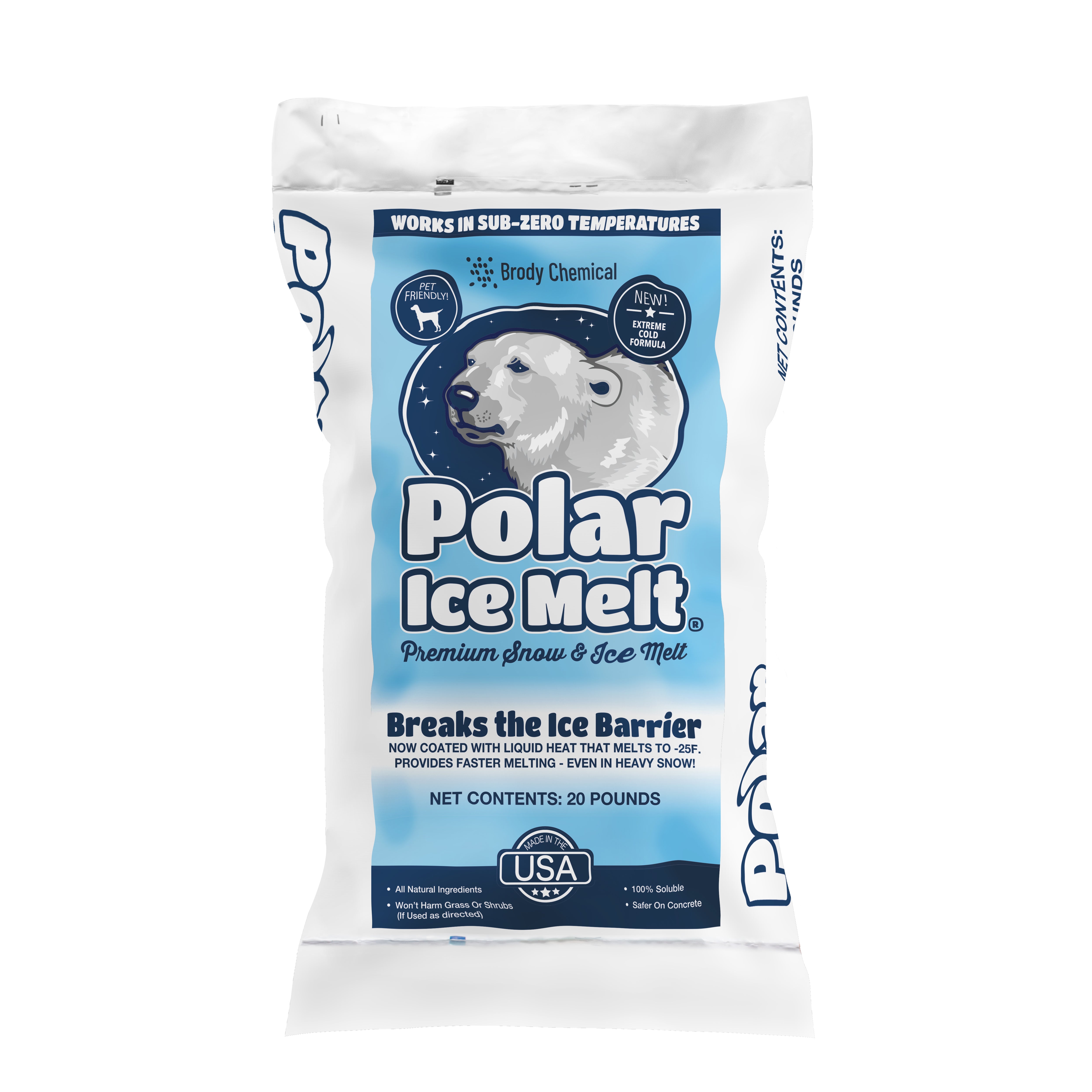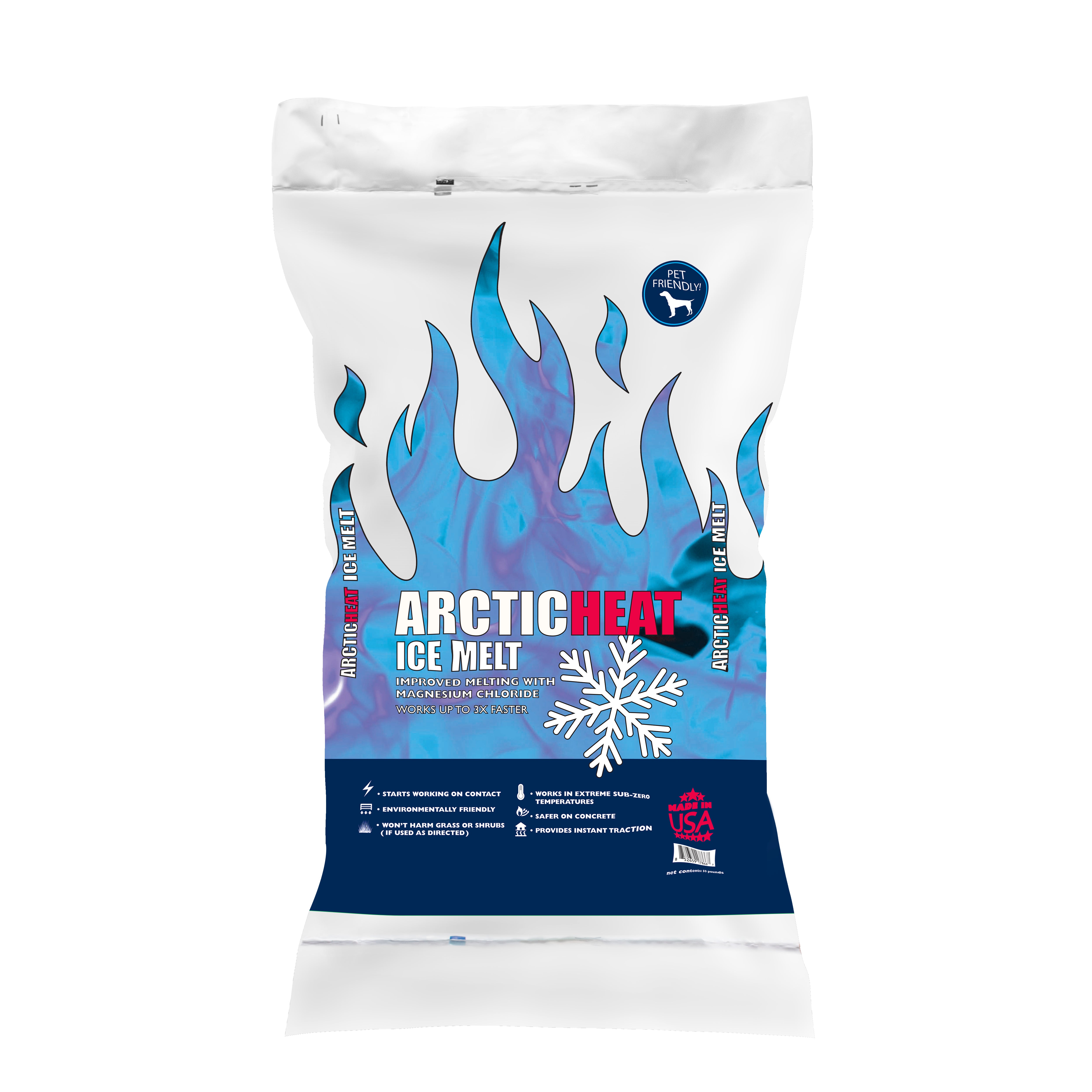You step outside and immediately regret not checking the weather. Ice covers everything. Your driveway looks like a hockey rink, and the sidewalk might as well be an ice skating trail. Trying to walk becomes a balancing act nobody signed up for. Ice melt chemicals turn this winter nightmare into manageable slush through some pretty cool science. Getting the chemistry wrong costs money and keeps surfaces dangerous, but the right approach makes winter maintenance actually work.
Key Takeaways
- Ice melt chemicals work by lowering water's freezing point, creating a liquid brine that generates heat and breaks ice bonds with surfaces
- Different ice melt types have varying temperature effectiveness: sodium chloride (rock salt) stops working below 15°F, while calcium chloride remains effective down to -25°F
- The melting process involves chemical compounds dissolving into ions that disrupt water's crystalline structure, preventing solid ice formation
- Proper application timing and technique significantly impact effectiveness - applying before storms and using thin layers works better than heavy post-storm applications
The Basic Science Behind Ice Formation and Melting
Water molecules party hard when it's warm, bouncing around freely. Drop the temperature to 32°F and they settle down into rigid formations we call ice. These organized crystal structures turn our walkways into slip-and-fall lawsuits waiting to happen.
Each water molecule grabs onto four neighbors through hydrogen bonds. This creates a tough lattice that makes ice surprisingly hard. Temperature controls the whole show - heat gives molecules enough energy to break free and dance around again, while cold locks them into place like prisoners.
But Mother Nature doesn't read textbooks. Wind steals heat faster than you'd expect. Your concrete driveway handles temperature swings differently than the asphalt street. That shady corner by the garage stays frozen all day while the sunny spots thaw by noon. These quirks explain why some areas need extra attention.
Ice melt chemicals crash this molecular party by messing up the organization. Imagine a marching band trying to keep formation while troublemakers run through the ranks. The chemicals make it impossible for water molecules to stay organized, so they give up and turn into liquid instead.
Chemical Disruption of Ice Crystal Structure
Ice melt products target the hydrogen bonds holding everything together. When these chemicals hit moisture, they break apart into charged particles called ions. These ions act like static interference on a radio - they scramble the signals water molecules use to form crystals.
Regular table salt splits into two pieces when it dissolves - sodium and chloride. Calcium chloride breaks into three chunks - one calcium piece and two chloride bits. More pieces mean more interference. That's why calcium chloride kicks sand in regular salt's face when temperatures drop.
The interference keeps working even when the thermometer plummets. Treated spots fight off refreezing because those ions stay busy disrupting any attempts at crystal formation.
Recommendation:
Facing winter's chill? Brody Chemical Snow & Ice Melt products are designed to tackle icy conditions effectively. Whether you're dealing with sidewalks, driveways, or commercial spaces, our solutions ensure safety and reliability.
Explore Now →
How Ice Melt Ingredients Create Heat and Liquid Brine
Here's where things get weird. Some ice melt products actually warm up when they dissolve. Sounds like magic, but it's just chemistry showing off.
Calcium chloride and magnesium chloride give off heat when they hit water. This heat turbo-charges the melting process beyond what the air temperature could manage alone. Professional liquid ice melter products use this heat trick for instant results. No waiting around for granules to dissolve - the action starts immediately.
The real secret weapon is brine formation. Dissolved chemicals create super-salty solutions that sneak into every crack and gap in the ice. This brine works like water getting under a loose bathroom tile, slowly but surely breaking the grip between ice and pavement.
Once that bond snaps, your shovel becomes useful again instead of just scratching at concrete. The leftover brine sticks around like a bouncer, keeping new ice from forming for hours or even days. This saves you from having to reapply product every few hours during extended cold snaps.
Rock salt works backwards - it actually steals heat from everything around it. This cooling effect slows everything down and makes it pretty useless when temperatures really tank.

Types of Ice Melt Chemicals and Their Effectiveness
Professional ice management means knowing which chemical works when. Each type has its sweet spot and its breaking point.
Performance Breakdown by Chemical Type:
Sodium Chloride (Rock Salt)
- Quits working: Around 15°F, completely dead by 5°F
- Budget factor: Cheapest option when conditions cooperate
- Best scenario: Light ice above 20°F
Calcium Chloride
- Keeps going: Strong down to -25°F
- Speed demon: Cuts through ice three times faster than competition
- Heat maker: Actually warms up during the process
Products like ice beater use calcium chloride's cold-weather superiority for results when everything else throws in the towel.
Magnesium Chloride
- Temperature range: Reliable to -13°F
- Gentler approach: Easier on plants and metal than calcium chloride
- Environmental angle: Generally considered the greener choice
Potassium Chloride
- Limited range: Only effective above 20°F
- Safe play: Won't damage concrete or vegetation as much
Specialty Blends Smart manufacturers mix different chemicals to cover more temperature ranges. Products like polar ice melt balance performance with cost and environmental concerns.
These blends often throw in rust inhibitors and performance boosters. Environmental products like eco melt focus on reducing ecological impact while still keeping people safe.
Temperature Thresholds and Performance Limits
Temperature decides whether your ice melt succeeds brilliantly or fails spectacularly. Each chemical has its comfort zone, and performance drops off a cliff outside those ranges.
Critical Temperature Performance Ranges:
- Sodium Chloride: Works above 15°F, becomes expensive gravel below 5°F
- Calcium Chloride: Stays effective down to -25°F
- Magnesium Chloride: Reliable to -13°F before giving up
- Potassium Chloride: Needs temperatures above 20°F to do anything useful
Performance doesn't just stop at these numbers. It slowly gets worse as conditions get colder. At borderline temperatures, you need way more product and patience to get the same results.
Smart maintenance crews check pavement temperature instead of just looking at the weather app. Ground temperature can be totally different from air temperature, especially on concrete versus asphalt. Infrared guns and embedded sensors give the real story about what's happening where rubber meets road.
Knowing these limits saves money and prevents disasters. Using rock salt when it's 5°F outside wastes your budget and leaves surfaces dangerously slick.
Improving Performance with Liquid Applications and Treated Salt
Liquid ice melt and pre-treated salt beat traditional methods hands down. Better coverage, less waste, faster results - what's not to love?
Liquid applications start working the second they touch ice. No waiting for dissolving - the chemical is already in solution and ready to rumble. Liquids also spread evenly instead of creating random bare spots that trip people up.
Pre-treating before storms prevents ice from forming at all. Liquid brine creates an invisible shield that stops snow and ice from sticking to pavement. This prevention game plan makes cleanup much easier and uses less chemical overall.
Treated salt gives you both worlds. Companies coat regular salt with liquid chemicals, making it work faster while staying easy to handle. These hybrid products activate quicker than plain salt and last longer too.

Best Practices for Different Winter Conditions
Smart ice management matches your strategy to what Mother Nature throws at you.
Application Strategy by Condition:
Before the Storm Hits Get liquid treatments down 24-48 hours before snow starts. Thin layers prevent ice from getting a foothold, making your post-storm life much easier.
During the Action Apply thin layers as snow piles up instead of waiting for the storm to finish. Multiple light applications work better than dumping everything at once.
After the Mess Shovel first, then apply chemicals. Your ice melt works better on thin ice than thick snow insulation.
When It's Brutally Cold Switch to calcium chloride when temperatures drop below 15°F. Monitor conditions because effectiveness changes fast with temperature swings.
Good timing maximizes what your chemicals can do while minimizing waste and environmental impact.
Environmental Considerations and Safety Factors
Smart ice melt use balances keeping people safe with not trashing the environment. Understanding the tradeoffs helps you make better choices.
Chloride products build up in soil and groundwater over time. Too much application creates problems without making things safer. Focus on using just enough to get the job done.
Environmental Protection Strategies:
- Plant Protection: Keep chemicals away from grass, bushes, and trees
- Physical Barriers: Shield sensitive plants during treatment
- Sand Alternative: Use sand for traction near delicate vegetation
- Cleanup Care: Rinse plants with fresh water when possible
Pet safety mainly comes down to protecting paws and preventing accidental eating. Pick gentler chemicals for areas where dogs and cats hang out.
When choosing effective snow and ice melt solutions, think about both immediate safety needs and long-term environmental responsibility.
Storage and handling require proper gear and training. Some chemicals get seriously hot when mixed with water, so careful procedures prevent nasty burns.
FAQ
What temperature does rock salt stop working?
Rock salt (sodium chloride) becomes ineffective below 15°F and stops working completely around 5°F.
Which ice melt works in the coldest temperatures?
Calcium chloride remains effective down to -25°F, making it the best choice for extreme cold conditions.
How much ice melt should I apply per square foot?
Use 2-4 ounces per square yard for most conditions - more product doesn't always mean better results.
Can I mix different types of ice melt together?
Yes, many commercial blends combine multiple chemicals, but avoid mixing products yourself as this can reduce effectiveness.
How long does ice melt stay effective after application?
Effectiveness varies by product and conditions, with calcium chloride providing the longest residual protection lasting several days.



